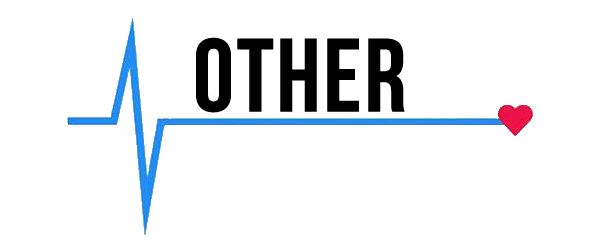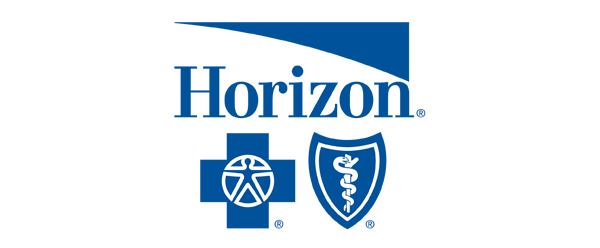Your initial leg fatigue treatment consultation with a pain management specialist is a critical step in addressing the discomfort of swollen and heavy legs. It serves as the cornerstone for unraveling the root cause and charting a customized course toward recovery.
What awaits you during your first visit? A specialist will discuss the specifics of your symptoms. Expect questions about the duration and severity of your swelling, accompanying discomforts, and any triggers that worsen or alleviate the pain.
A detailed exploration of your symptoms will follow, tracing their onset, evolution, and influential factors. Your specialist will use a blend of open-ended and specific questions to gain a deep understanding of your experience. Reviewing previous medical issues, surgeries, and treatments to identify any connections to your current symptoms is essential as the experts examine potential chronic conditions.
Doctors will also usually explore family medical history, lifestyle choices like smoking and alcohol consumption, and your occupational or environmental surroundings. This holistic approach identifies hereditary conditions and surrounding contributors.
A physical examination will assess the swelling, search for signs of vein disease, and evaluate your circulatory health. Your specialist might go beyond your legs, conducting a broader examination of your cardiovascular, respiratory, and musculoskeletal systems to exclude any systemic causes for the swelling.
An ultrasound or other vascular imaging technique may be used to visualize blood flow and pinpoint any blockages or vein-valve abnormalities. Blood tests can help rule out systemic problems such as kidney or heart disease, which can sometimes turn into swelling in your legs.
Above all, your specialist will discuss leg-swelling causes. This open dialogue empowers you to make informed decisions about your health, equipping you with the knowledge and tools to effectively manage your condition.
Prevention Tactics for Leg Fatigue Treatment
To prevent tired legs, there are several leg fatigue treatment solutions. They include:
- Eating a balanced diet to ensure you’re getting enough nutrients.
- Getting enough vitamin D from sun exposure or your diet.
- Wearing proper, supportive footwear.
- Moving around frequently throughout the day.
- Exercising at least 15 minutes daily.
“Usually, resting and home remedies will be effective in relieving tired legs,” states Healthline. “However, if your legs still feel tired after at-home treatment or if the tiredness has persisted for more than a few days, make an appointment with your doctor.”
If your legs constantly need a break, or if you experience unexplained pain or swelling, it’s time to consult a qualified pain management specialist. These symptoms could signal an underlying condition that needs immediate attention.
Any persistent pain, dysfunction, or discomfort warrants a visit to the experts. Pain management specialists possess the right expertise to unravel what’s going on behind your tired legs.
Routine maintenance of your legs, like rest and self-care, keeps them running smoothly. But it’s wise to seek a medical professional’s help to prevent a breakdown when routine maintenance isn’t cutting it. Weakness in your muscles and a loss of bone density are usually mitigated by doing simple, routine weight-bearing exercises, according to University Health News.
“A sedentary lifestyle only helps the normal age-related loss of muscle mass,” the researchers state. “Physical activity boosts the movement of blood, oxygen, and glucose to your leg muscles. Forcing your muscles to work harder really has some anti-aging benefits.”
Tired legs may be accompanied by pain, soreness, or cramping. They usually aren’t a cause for concern, but it’s still important to pay attention to your body when tiredness occurs.
Decoding Sensations and Causes of Tiredness
If you go through leg fatigue treatment, you’ll learn that your legs are like messengers, communicating sensations and feelings. What are they trying to tell you?
From intense workouts to long days on your feet, your daily routine can leave your legs pleading for rest. Similarly, prolonged sitting and underuse can cause sluggish heaviness, while muscle cramps and painful contractions interfere with your life.
Hypokalemia, or low potassium, can also disrupt the delicate balance within your body, leading to fatigue, weakness, and even cramps. Since this perpetrator can hide behind medications or underlying health conditions for some patients, it’s important to consult your pain management specialist for a proper diagnosis.
Varicose veins, or twisting and bulging vessels, can also hinder blood flow, causing your legs to feel tired and achy. While self-care measures such as exercise and compression stockings can provide relief, seeking professional advice is wise if your symptoms persist.
Poor circulation can also leave your legs feeling heavy and fatigued. Increasing your daily movement and avoiding tight clothing can help, as well as other simple lifestyle choices.
For women, pregnancy can also bring hormonal changes, fluid retention, and increased pressure on veins, leading to tired and swollen legs. While sleeping on your left side and gentle exercises can offer comfort, any sudden or severe swelling warrants immediate medical attention as it could signal Preeclampsia, or high blood pressure while pregnant.
Feeling fatigued and suffering from heavy legs could also be early indicators of Multiple Sclerosis, a condition that disrupts communication between your brain and muscles. Other symptoms, such as vision problems, numbness, and balance issues, may accompany the tiredness.
Your legs are barometers of your overall health. By listening to their messages and seeking appropriate care, you can ensure they continue carrying you with strength and vitality.
Bedside Manners and Leg Fatigue Treatment
Going beyond medical expertise, a pain management specialist’s bedside manner plays an imperative role in creating a positive experience for those seeking leg fatigue treatment. When you feel truly heard and understood, a bond of trust forms, paving the way for successful and productive treatment.
Studies have consistently shown that experts and doctors who practice active listening and demonstrate empathy foster stronger patient-physician relationships. This leads to greater adherence to treatment plans and improved health outcomes.
As you and your specialist work together to navigate a path to healthier legs, you’ll learn that this is the essence of shared decision-making. By involving you in the treatment-decision process, a pain management expert helps you take ownership of your situation, leading to superior results. A reassuring tone can speak volumes as a specialist conveys compassion, understanding, and attentiveness.
With that said, remember to stay alert to the following signs: patient-centered communication, empathy, and non-verbal communication. You’ll gain valuable insight into creating a positive health care experience, even for something as simple as tired legs.
In the end, effective communication and patient-centered care are the cornerstones of any expert-treatment relationship. They build trust and pave the way for better outcomes. A doctor or pain management specialist’s bedside manner can be just as healing as the treatment itself.
A Personalized Path to Relief from Swollen Legs
When swollen legs disrupt your life, looking for specialized leg fatigue treatment can be the key to unlocking comfort. By investigating the root cause of your aches, pain management specialists can create a customized plan to tackle swelling, heaviness, and fatigue.
Through a comprehensive assessment, your specialist will pinpoint the underlying factors contributing to your swollen legs, whether it’s an injury, inflammation, circulatory problem, or another health condition. Armed with this knowledge, they’ll craft a strategy that targets the source of the issue.
Manual lymphatic drainage massage, a gentle yet powerful technique, can stimulate your lymphatic system, encouraging the removal of excess fluid. Compression therapy can also enhance blood flow and prevent additional swelling. Kinesiology taping, a supportive technique, promotes natural healing and provides relief.
Your specialist won’t stop at in-clinic treatments. They’ll provide you with lifestyle recommendations to manage and prevent swollen legs at home, such as:
- Getting regular massages. They boost circulation and reduce fluid retention.
- Taking cold baths. Cool water constricts blood vessels, minimizing swelling.
- Ditching the high heels. Also, tight clothing can hinder circulation.
- Kicking the smoking habit. It harms blood flow.
- Getting out and about. Regular exercise keeps your blood pumping and fluid from pooling.
- Elevating your legs. Propping them above your heart level encourages fluid drainage.
- Uncrossing your legs. Crossing them impedes circulation.
- Prioritizing sleep. Quality sleep is vital for health and healing.
- Using compression. Compression socks or stockings provide gentle pressure to aid blood flow back to the heart.
By combining professional care with these lifestyle adjustments, pain management specialists provide a holistic approach to swollen legs. You can say goodbye to discomfort and hello to a life with renewed leg health and energy.
Wellness and Pain
Discover your personalized leg fatigue treatment by visiting Wellness and Pain. We offer conservative treatments, routine visits, and minimally invasive quick-recovery procedures. We can keep you free of problems by providing lifestyle education and home care advice.
This enables you to avoid and manage issues, quickly relieving your inhibiting lifestyle conditions when complications arise. We personalize patient care plans based on each patient’s condition and unique circumstances. Wellness and Pain can help improve wellness, increase mobility, relieve pain, and enhance your mental space and overall health.











